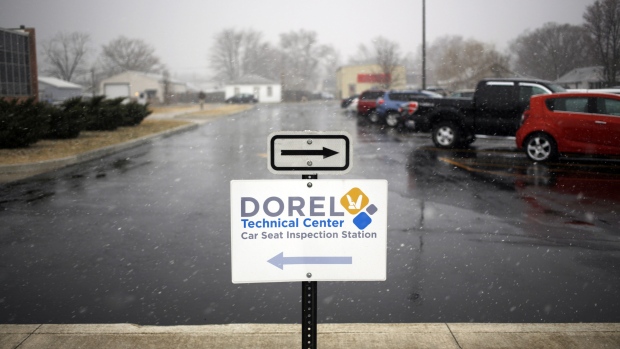Mar 11, 2022
Dorel continued to be hampered in Q4 by supply chain constraints, rising costs
, The Canadian Press

Worsening supply chain constraints and higher costs, especially for transportation, increased fourth-quarter and 2021 net losses at juvenile products and home furnishings manufacturer Dorel Industries Inc.
"Six months ago, the problems were the result of COVID-related shutdowns at our suppliers in Malaysia, Vietnam and China. Today, suppliers are up and running, but it is the shortage of containers that is causing delays in shipments," CEO Martin Schwartz said Friday in a call with analysts.
The erratic supply chain has been a particular problem for Dorel Home. It resulted in substantial cost increases for warehousing, freight, labour and raw materials on imported and manufactured items.
Container shortages have not improved and the Montreal-based company said the situation has hampered its ability to introduce new products.
Increased freight costs are especially challenging for a furniture company, added chief financial officer Jeffrey Schwartz.
"When a container goes from US$2,000 to US$15,000 in an 18-month period, and there only may be 300 or 400 bunk beds or sofas on the container, the increase is significant," he said on the call. "And therefore, our cost, our pricing has to go up significantly. So just the increase in ocean freight was huge."
The CFO said the company faced significant issues last summer from COVID that reduced staffing at its East Coast warehouse. It paid a record US$8.5 million in demurrage and detention costs for the year to rent out containers that were not able to be quickly unloaded.
"In theory, we should not be paying anything. I mean, in a normal year, you'd probably end up maybe about $1 million or so. But the $8.5 million last year was certainly a major pain."
He said Dorel is doing a better job of clearing containers, but has also faced higher costs of finished goods in Asia. And now fuel has surged.
"So we are in the middle of a storm. Visibility is difficult to know when this thing will end."
While Dorel and competitors have responded by increasing prices and another round of hikes may be required, everyone wonders how buyers will respond to significant price increases, Jeffrey Schwartz said.
Its juvenile business has also hiked prices in response to supply chain issues and commodity price increases. Most juvenile markets did better last year except for Europe, which continued to face shortages from supply chain bottlenecks.
It is adding new equipment to Dorel Home plants in Ohio and Cornwall, Ont., as it plans to return some production from Asia. In juvenile, Dorel sold its manufacturing facilities in China and turned to third-party suppliers while also shifting production of some soft goods to Mexico.
Dorel expects earnings volatility will continue into 2022, with rampant inflation and the war in Ukraine making the predictability of its earnings very difficult, he added.
The company said its net loss from continuing operations grew in the fourth quarter to US$29.6 million or 91 cents per diluted share, compared with a loss of US$13.3 million or 41 cents per share a year earlier.
Reporting in U.S. dollars, its adjusted loss for the three months ended Dec. 30 amounted to US$12 million or 37 cents per diluted share, compared with an adjusted loss of US$9.8 million or 30 cents per share in the fourth quarter of 2020.
Revenue slipped to US$435.3 million from US$439 million a year earlier.
Analysts on average expected Dorel to report an adjusted loss of five cents per share on US$439.3 million of revenues, according to analysts polled by Refinitiv.
Dorel's shares were down 15.4 per cent or $1.80 to $9.92, the lowest level in more than a year.
The results from continuing operations did not include the company's sports division, which was sold Jan. 4 to Pon Holdings for US$810 million in cash.
For the full year, it lost US$111.8 million on US$1.76 billion of revenues, compared with a loss of US$64.8 million on US$1.12 billion of revenues in 2020.


